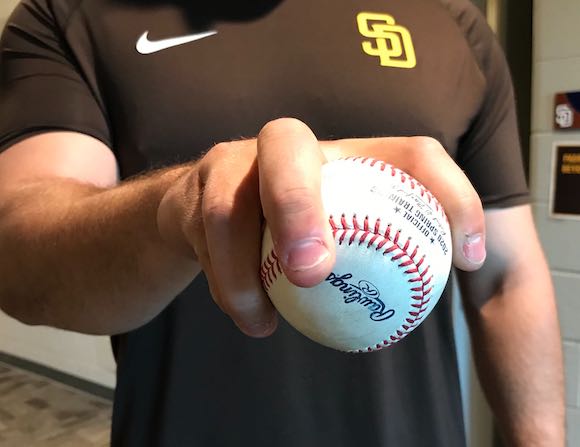Below is an analysis of the prospects in the farm system of the Seattle Mariners. Scouting reports are compiled with information provided by industry sources as well as my own observations. For more information on the 20-80 scouting scale by which all of our prospect content is governed, you can click here. For further explanation of the merits and drawbacks of Future Value, read this.
All of the numbered prospects here also appear on The Board, a resource the site offers featuring sortable scouting information for every organization. It can be found here.
Other Prospects of Note
Grouped by type and listed in order of preference within each category.
Arm Strength Relief Sorts
Yeury Tatiz, RHP
Dayeison Arias, RHP
Natanael Garabitos, LHP
Taylor Guilbeau, LHP
Tatiz almost made the main section of the list. He’s 19 and up to 95 with an average slider. Arias has performed as a pro, striking out 160 hitters in 116 pro frames. He’s consistently been in the 92-96 range as a lower-minors closer. He has an odd, swinging gate delivery that swivels about an axis created by a stiff front leg. If that’s not a long-term issue, then he’s a middle relief up/down type. Garabitos was up to 97 at age 18 but has little idea where it’s going right now. Guilbeau is in the mid-90s (it doesn’t play that way, though) with a good changeup and is on the big league roster fringe.
Bench Bats
Donnie Walton, SS
Dom Thompson-Williams, OF
Connor Hoover, INF
There’s not much upside from this group. Walton is a versatile 26th man possibility. DTW is now 24 and the late-blooming possibilities are gone. He’s a smaller-framed guy who is a fifth outfielder at best. Hoover was old for his level last year but his swing has some verve and he might be a bat-first infielder.
Older Depth Arms
Penn Murfee, RHP
Anthony Misiewicz, LHP
Kyle Wilcox, RHP
Darin Gillies, RHP
Scott Boches, RHP
Nick Duron, RHP
Collin Kober, RHP
This group is pretty self-explanatory. They’ll sit at the upper-levels and provide viable innings if a rash of injury occurs. Murfee and Misiewicz are pitchability arms. Murfee is the current minor leaguer most likely to be a GM based on what people in and out of the org say about his aptitude for learning and implantation. Wilcox and Gillies both throw pretty hard (up to 96/97) and performed at upper levels last year. Boches is a spin/ride mid-90s relief arm, Duron has more arm strength and is up to 97 but with fewer underlying traits to bolster it, and Kober is a heavy sinker submariner who has missed bats.
Young Sleeper Arms
Blake Townsend, LHP
Tim Elliott, RHP
Danny Chang, LHP
Townsend is a strong-bodied teenage Aussie up to 93 with a shot for an above-average slurve. Elliott has a plus curveball and fringe other pieces. Chang struck out a lot of AZL hitters with a spin-efficient fastball in the mid-80s but needs to get much stronger to develop viable big league velo.
System Overview
It’s clear the developmental changes on the pitching side have already begun to produce results in the form of the many older, 40-man-worthy arms on this list. The same is not yet true for the hitters. 50% of prospects on The Board are hitters, but they only comprise a third of this org’s list, and it’s an even lower ratio if we include the Others of Note. Several of the bats on the list are very good, though, and have responded well to aggressive assignments.
That’s not to say this org doesn’t still have some odd, developmental quirks. Out-of-place, early-season assignments for players like Deivy Florido (Triple-A, stuff dipped throughout the year and he didn’t make the cut here), Damon Casetta-Stubbs (Hi-A), Cesar Izturis Jr. (Triple-A, 2018), and Connor Hoover (Double-A), or mid-season, single-game promotions for Ray Kerr, Ljay Newsome and Colin Kober (all to Triple-A) look, to me, like ways of toying with opponents’ pro scouting models by indicating to the model that those players were promoted. The org’s explanation for my tinfoil hat theory is that the Mariners reward pitchers for hitting measurable goals and would like to get them acclimated to the idea of going up a level to pitch on short notice and then heading back down, both of which are pretty reasonable explanations.
